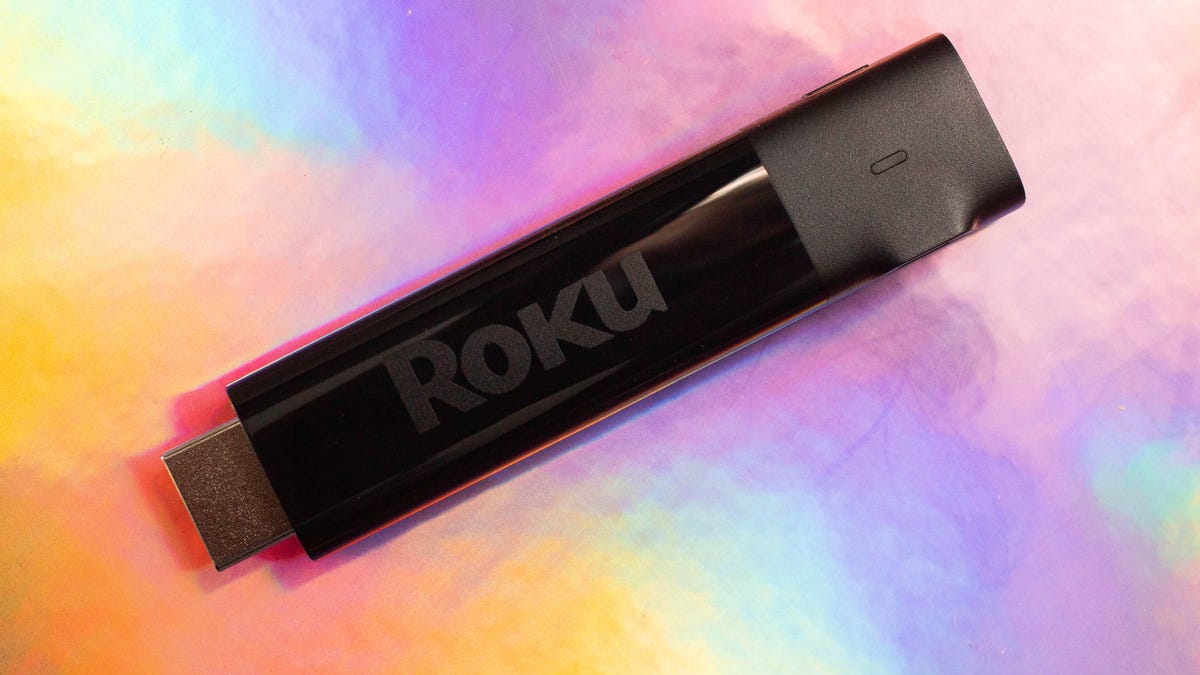YouTube ratchets up Roku face-off by adding YouTube TV to main YouTube app
And Google may send free streaming devices to some YouTube TV subscribers, the latest escalation in its standoff with Roku over a distribution deal.

Roku and Google's YouTube have been at odds over the terms of a new distribution deal for more than a week.
Google's YouTube is tweaking its app for Roku to include access to its live-TV streaming subscription service, YouTube TV, the search giant said in a blog post Friday, as it also explores sending free streaming devices to YouTube TV subscribers.
It's the latest escalation in a standoff between Google and Roku over a new distribution deal for YouTube TV, a subscription service that streams live television channels and is typically used as an alternative to cable or satellite for cord-cutters. After their previous deal expired last week, YouTube TV's dedicated app was removed from Roku's channel store, preventing new downloads. However, the YouTube TV app continues to work on Rokus for anyone who previously installed it -- and, until now, the main YouTube app on Roku was unaffected.
But with Google's move Friday, the main YouTube app is set to serve dual purposes -- its traditional job of offering up YouTube's massive library of online video free for anyone to watch with ads, as well as new access to YouTube TV's live channels and other features for paying subscribers.
Roku described YouTube's move Friday as "the clear conduct of an unchecked monopolist bent on crushing fair competition and harming consumer choice," according to a statement. "The bundling announcement by YouTube highlights the kind of predatory business practices used by Google" that are under investigation by Congress, attorneys general across the U.S. and regulatory bodies around the world, Roku added.
Indeed, Google is facing a dearth of investigations into whether it abuses monopoly power on several fronts. Most recently, for example, Google was grilled by senators on an antitrust subcommittee about accusations it uses the marketplace heft of its Google Play app store to retaliate against rivals and entrench its own power. While YouTube TV is a relatively small service, with more than 3 million subscribers, YouTube itself is the world's biggest source of online video, with more than 2 billion viewers every month.
Previously, Google has rejected Roku's claims that it's abusing YouTube's market dominance as baseless, saying that YouTube is negotiating with Roku in good faith.
Carriage disputes between programmers and distributors are nothing new -- they're a routine annoyance for customers of traditional cable and satellite TV. Up until last year, the absence of these kinds of service "blackouts" was one of the ways streaming set itself apart from the aggravations of television's past.
But in the last year, they've cropped up with the launches of many big, new streaming services, such as both HBO Max and NBCUniversal's Peacock failing to launch with support on Roku. The tensions come as streaming has grown more popular than ever during the coronavirus pandemic, amplifying a long trend of people watching more video over the internet. Streaming distributors like Roku and streaming programmers like YouTube both want to control the data, money, programming and discovery tools at the heart of your streaming activity. Both sides want to entrench themselves in positions of power for the next era of television.
The latest standoff between Roku and Google's YouTube TV demonstrates that even with long-established apps, both sides may agitate to get the upper hand as the dynamic of power evolves for the future of TV.
On Friday, YouTube said YouTube TV's service would be available inside its main YouTube app for Roku through an update that would roll out "over the next few days." But this feature will also expand to "as many devices" as possible over time, it said.
YouTube is still working with Roku to reach an agreement, the company added, but it also noted that Google is in separate talks with other partners about possibly securing free streaming devices "in case YouTube TV members face any access issues on Roku." Essentially, that means Google is considering sending free streaming gadgets made by one of Roku's rivals to YouTube TV customers if YouTube TV's service on Roku is disrupted further.
Google itself is a Roku hardware rival; its Chromecast streaming devices compete with Roku, making Google both a partner and competitor in different facets of its business.
Roku first warned customers in late April about possible disruptions to watching YouTube TV on its devices, claiming that Google was abusing YouTube's dominance to make monopolistic demands. Google rejected the accusations, saying it's negotiating with Roku in good faith. When their previous deal expired last week with no new agreement in place, Roku removed YouTube TV's app from its channel store but stopped short of cutting off all access to YouTube TV on its devices.
More streaming advice
- 10 Ways to Save Money on Streaming
- How to Cut the Cable TV Cord in 2023
- See More at Streaming TV Insider

